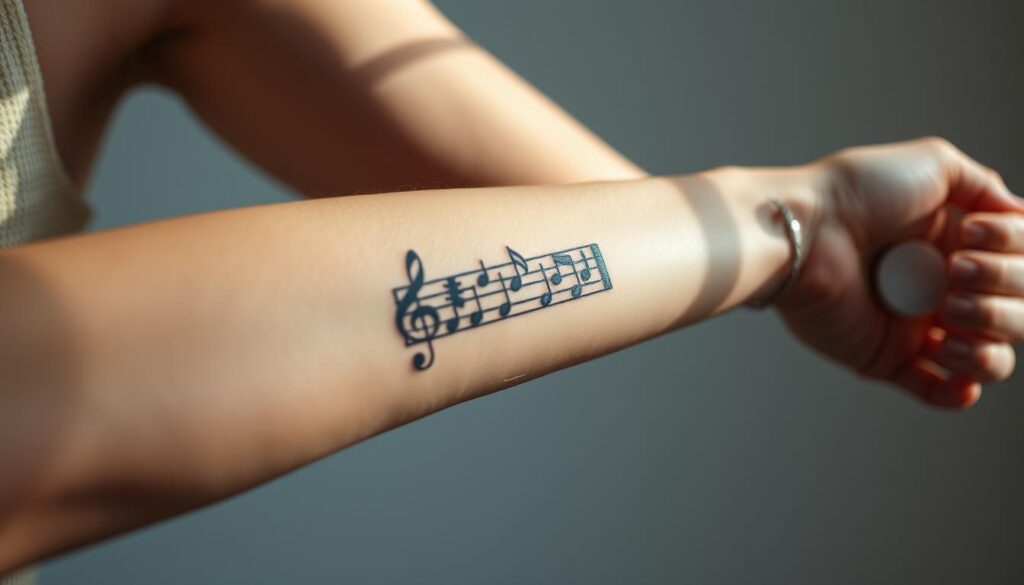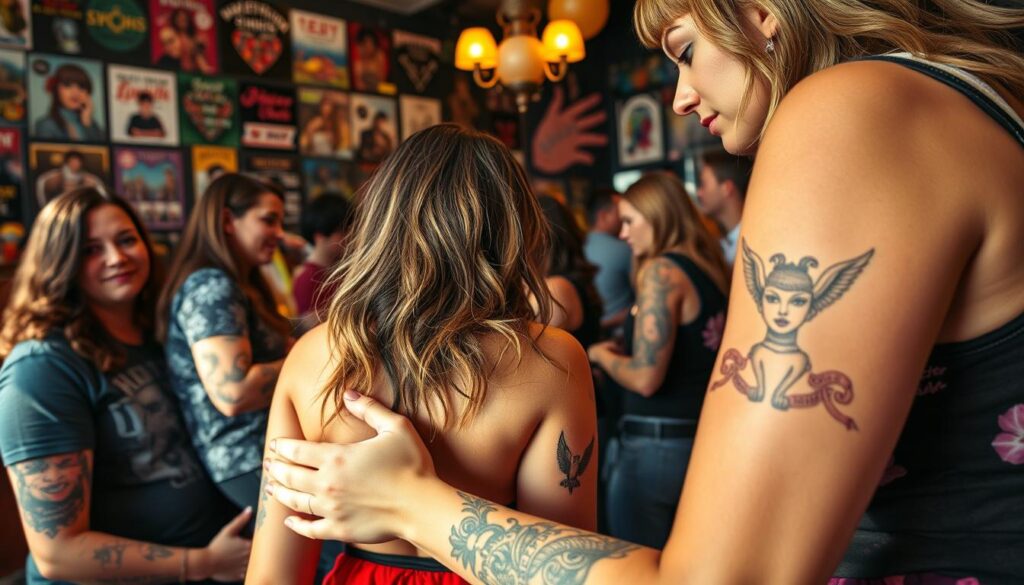
What if one of the world’s most scrutinized celebrities has been hiding a secret for nearly two decades? For a star whose every outfit and hairstyle sparks headlines, the absence of permanent body art raises eyebrows. How has a global icon avoided tattoos while writing songs that celebrate rebellion, love, and self-expression?
The truth might surprise you. Despite her fearless creativity, the singer-songwriter has openly rejected the idea of lasting ink. In a 2012 interview, she confessed, “I don’t think I could ever commit to something permanent.” Her reasoning? A mix of practicality and personal philosophy that’s stayed consistent through her career evolution.
Devoted followers have combed through concert footage and paparazzi shots for years. Not a single tattoo has surfaced—not even her rumored favorite number, 13. This deliberate choice mirrors themes in her music about fleeting moments versus lifelong commitments. It also highlights how celebrities influence trends without always following them.
Key Takeaways
- No permanent body art has ever been confirmed on the artist
- A 2012 interview revealed her hesitation about lasting ink
- Fans’ intense scrutiny makes hidden tattoos unlikely
- Lyrics about permanence contrast with her real-life choices
- Celebrity decisions often spark broader cultural conversations
The Origins of the Tattoo Rumors

Creative storytelling sometimes blurs fantasy and reality—especially when poetic lines about “golden tattoos” spark wildfire theories. For years, passionate observers have dissected every lyric and photo, hunting for clues about hidden body art.
Tracing the Media Narrative and Fan Speculation
Songwriting became ground zero for tattoo rumors. Tracks like ‘Dress’ and ‘Dancing With Our Hands Tied’ used vivid ink metaphors, making listeners wonder: Was she describing real body art? Online forums lit up with debates about possible meanings.
Media outlets amplified these theories. Headlines questioned whether symbolic references matched secret tattoos. Fans even analyzed concert close-ups, searching for glimpses of permanent designs.
Public Appearances and Temporary Ink Moments
The 2019 photoshoot for “You Need To Calm Down” took speculation to new heights. A striking back piece featuring butterflies and snakes appeared in promotional images. Social media buzzed—until eagle-eyed followers noticed the artwork vanished days later.
This temporary design achieved two things. It showcased artistic vision without commitment. It also proved how quickly temporary choices can fuel lasting rumors. Fans now scrutinize every sparkle or bandage, knowing even fake ink makes waves.
Through it all, one pattern stays clear: lyrical creativity and strategic visuals keep people guessing—without ever crossing into permanence.
Does Taylor Swift Have Tattoos? Uncovering the Facts

In a world where celebrities often flaunt body art, one global icon stands out for her bare skin. While fans scour photos for hidden meanings, the reality lies in her own words and creative workarounds.
Insights from the 2012 Taste of Country Interview
When asked about permanent ink, the artist gave a clear answer: “I don’t think I could ever commit to something permanent.” She repeated this phrase twice during the conversation, emphasizing her hesitation. Her reasoning? A mix of practicality and personal preference. If she ever changed her mind, she mentioned her lucky number 13 would be the top choice.
Lyric Tattoos and the Significance of Number 13
Instead of lasting designs, you’ll find temporary lyrics written on her arm during tours. Band members often suggest lines from unreleased songs minutes before shows. This playful tradition lets her showcase meaningful words without the lifelong commitment. The number 13 appears everywhere in her career—from handwritten concert notes to album Easter eggs.
| Feature | Permanent Tattoo | Swift’s Choice |
|---|---|---|
| Commitment Level | Lifelong | Temporary |
| Design Flexibility | Fixed | Changes nightly |
| Personal Significance | Symbolic | Lyrics & numbers |
Fan Influence and the Impact on Tattoo Culture

You’d never guess someone without body art could redefine modern tattoo trends. Yet the singer’s creative universe has sparked a wave of permanent tributes from devoted followers. This phenomenon reveals how cultural icons shape self-expression—even through absence.
Swifties and the Rise of Tattoo Tributes
Walk into any tattoo studio, and you might spot lyrics in delicate script or snakes coiled around roses. Fans choose designs reflecting eras like Reputation or Folklore, turning concert memories into lifelong art. Some even coordinate group tattoos during tour stops.
The irony? While the artist avoids permanent ink, her words become others’ skin stories. One fan told Rolling Stone: “Her music marks my life chapters—why not wear it proudly?” Temporary stage writings often inspire these deeply personal decisions.
How Celebrity Image Shapes Tattoo Trends
Celebrities don’t need tattoos to influence body art. Strategic visuals in music videos and album covers create symbols fans rush to reinterpret. A single lyric about “golden tattoos” can birth hundreds of unique designs worldwide.
Partners like Travis Kelce mirror this ink-free approach, showing how personal choices ripple through pop culture. Yet the singer’s playful joke about a shamrock forehead tattoo proves she understands the power—and humor—of body art symbolism.
From sparkly temporary designs to meaningful song lines, her impact reminds us: Art inspires connection, whether etched on skin or woven through melodies.
Conclusion
What defines a legacy when ink fades but words remain? For this global artist, self-expression thrives through music rather than body art. Over a decade after explaining her hesitation about permanent markings, that philosophy still holds true.
Temporary creativity continues to satisfy her artistic spirit. Handwritten song lines appear on skin during shows, vanishing before encores end. Even her beloved number 13—though considered—never made it past the idea stage.
You’ll find fascinating contrasts here. Millions etch lyrics into their skin while the songwriter herself avoids needles. This reverse influence proves cultural impact doesn’t require participation. Personal choices can spark movements, showing how people shape trends through authenticity.
Ultimately, bare skin becomes its own statement. In a world rushing to make things last, sometimes the most powerful art lives in melodies—not markings.
